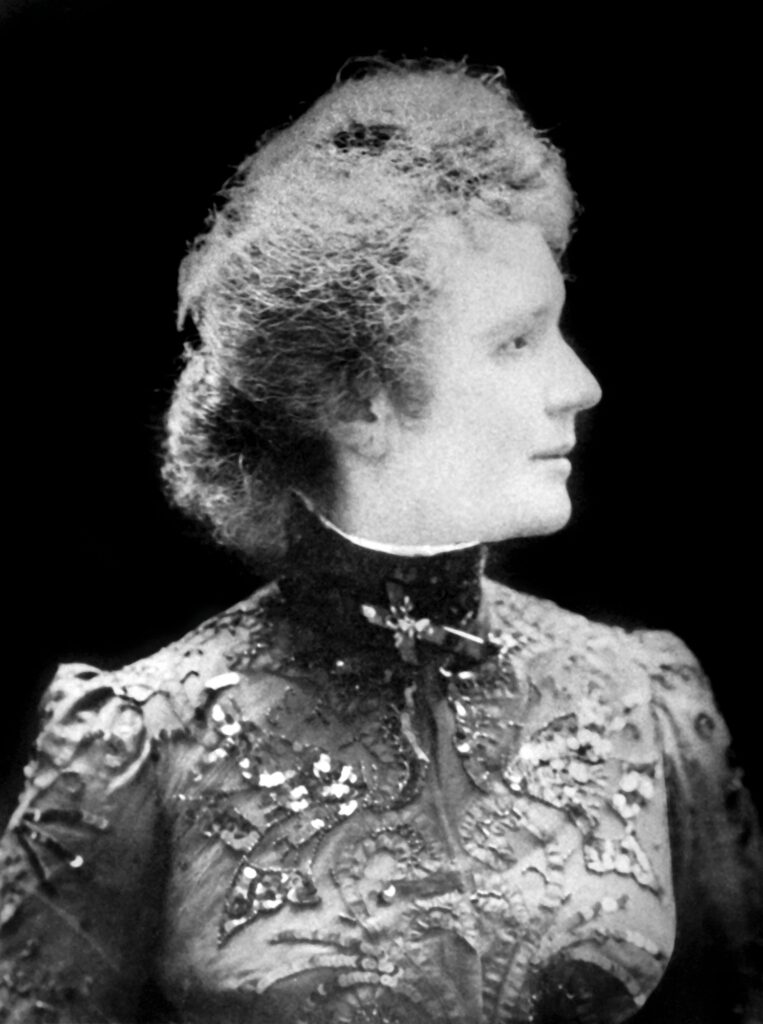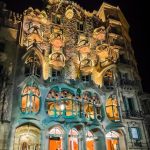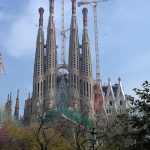
Antoni Gaudí, the renowned Catalan architect, wasn’t born into fame or fortune. He grew up in a modest home in Reus, Spain, surrounded by the influences of his father, a coppersmith. From a young age, Gaudí was drawn to the natural world, which would later fuel his artistic vision. His fascination with organic forms became a hallmark of his work, but even as a child, it was clear he saw the world differently.
In his early years, Gaudí wasn’t immediately considered a prodigy. In fact, his teachers often criticized him for not following traditional methods. However, he showed remarkable talent in creating intricate designs that echoed the fluidity and complexity of nature. These early skills would later define his work, transforming the architectural landscape of Barcelona.
Gaudí’s time at the Provincial School of Architecture in Barcelona was pivotal. There, he met various influential figures in the artistic world. But amidst the bustling city and his growing passion for architecture, he would soon cross paths with a woman who would profoundly affect him: Josefa Moreu.
Gaudí Meets Josefa Moreu: A Love That Defied Expectations
Josefa Moreu (often called “Pepeta”) entered Gaudí’s life like a breath of fresh air. At a time when Gaudí was pouring his energy into his architectural projects, their connection provided him with an emotional depth he hadn’t previously known. Josefa wasn’t just a fleeting presence in Gaudí’s life. She represented something much deeper: a muse and a source of emotional stability.
Their meeting was serendipitous, though no specific details of their introduction are recorded in history. Yet, it’s widely believed that Gaudí fell for her beauty and intellect, qualities that mirrored his own complexity. Theirs was a connection rooted in shared ideals and a mutual appreciation for the beauty of the world.
Josefa wasn’t a public figure, and unlike many women of the time, she stayed out of the limelight. She wasn’t interested in fame, nor did she seek to elevate herself through Gaudí’s rising status. Her simplicity was something Gaudí cherished, and it allowed him to be vulnerable with her in ways he never could be in his professional world.
While the details of their relationship remain somewhat mysterious, many historians agree that Gaudí was deeply infatuated with Josefa. However, this was a one-sided love. Josefa did not reciprocate Gaudí’s romantic feelings, and their relationship never blossomed into the union he had hoped for. This rejection left a lasting mark on Gaudí’s emotional life and deeply influenced his personal choices.
Unrequited Love: Gaudí’s Emotional Struggle
The unrequited nature of Gaudí’s feelings for Josefa Moreu caused him considerable emotional distress. It was not a dramatic tragedy of sudden death, but rather the slow, quiet realization that the woman he loved would never feel the same way. This kind of heartbreak shaped Gaudí’s personal life and his approach to relationships going forward.
Gaudí, who had once entertained the thought of marriage, gradually withdrew from the idea altogether. After the relationship with Josefa ended, he dedicated himself even more intensely to his work. His devotion to his craft became a substitute for the emotional connection he could not find in romantic relationships.
For the rest of his life, Gaudí never married. In fact, many who knew him observed that he became increasingly isolated, pouring all of his energy into his architectural pursuits. His commitment to his projects grew even stronger, especially his work on the Sagrada Família, which became a central focus of his later years.
The Emotional Impact of Josefa Moreu on Gaudí’s Work
Although Josefa Moreu never became Gaudí’s life partner, her presence in his life had a profound impact on his work. Gaudí’s architecture, which was already filled with organic forms and natural beauty, began to carry a deeper sense of spirituality and longing after the end of his relationship with Josefa. It was as if his unfulfilled love found expression in the intricate details of his designs.
One of the most notable examples of this shift can be seen in Gaudí’s design for the Sagrada Família. Although work had already started before Gaudí met Josefa, his emotional turmoil following her rejection infused the project with new meaning. Gaudí famously once said, “The straight line belongs to men, the curved one to God.” This concept, reflecting both nature and divinity, took on greater significance in his work as he sought solace in his artistic expression.
Gaudí’s decision to remain celibate and single for the rest of his life is often viewed as a result of his unfulfilled love for Josefa Moreu. After the end of their relationship, he increasingly turned to his religious faith and to his work as outlets for the emotional energy he had once hoped to invest in a romantic relationship.
Gaudí’s Devotion to Spirituality After Josefa’s Rejection
Following Josefa’s rejection, Gaudí’s spiritual devotion grew even stronger. He had always been a religious man, but now his faith took center stage in his life and work. This period of his life is marked by a noticeable shift, both in his personal habits and in his architectural designs. His belief in the divine became the guiding force behind every creative decision he made.
Gaudí began attending mass daily and spent much of his free time in prayer. His faith was not just a comfort to him, but a way to cope with the disappointment and loneliness he felt. It was through his connection to God that Gaudí found the strength to continue working, and he often credited his faith as the source of his inspiration.
His architecture became a form of worship. The Sagrada Família, which had always been intended as a tribute to the divine, now took on even greater significance. Gaudí poured his heart into the basilica, designing it with an eye toward creating a space where people could connect with the divine in a tangible way. Every detail, from the towering spires to the intricate stained glass, was meant to reflect God’s presence in the world.
The Legacy of Gaudí and Josefa Moreu: Inspiration Beyond Loss
Although Josefa Moreu did not share Gaudí’s love, her influence on his life and work cannot be overstated. While her name might not be as famous as Gaudí’s, she was a critical figure in shaping his emotional world. Her rejection marked a turning point, leading Gaudí to withdraw from personal relationships and devote himself entirely to his work.
Gaudí’s works, particularly the Sagrada Família, stand as monuments not only to his genius but also to his emotional journey. Some art historians argue that without the heartbreak he experienced through his unrequited love for Josefa, his later works may not have achieved the same level of emotional intensity. In this way, Josefa’s legacy lives on, intertwined with the bricks and mortar of Gaudí’s creations.
Today, tourists from all over the world marvel at Gaudí’s architectural masterpieces. They admire the fluidity of his designs, the way his buildings seem to defy the rules of architecture while maintaining a sense of balance and harmony. What many don’t realize, however, is that behind these beautiful structures lies a story of deep, unfulfilled love and spiritual longing.
Quotes That Shed Light on Gaudí’s Relationship With Josefa
Historians and art critics have often speculated about the role Josefa Moreu played in Gaudí’s life. Although Gaudí himself rarely spoke publicly about her, those who knew him well have shared anecdotes that give us glimpses into their relationship. One of Gaudí’s close friends is quoted as saying, “Antoni’s love for Josefa was unlike anything I had ever seen. She brought out a tenderness in him that none of us had ever known existed.”
This tenderness is reflected in Gaudí’s architectural designs. His creations are not just buildings; they are love letters written in stone, glass, and iron. The beauty of Gaudí’s work lies not only in its visual appeal but also in the emotions it evokes. It’s clear that Josefa Moreu was a major influence on this emotional depth.
Architectural critic Robert Hughes once said, “Gaudí’s greatest work is not just the architecture—it is the emotion that his buildings convey. It’s as if you can feel the love, the passion, the grief, and the joy all at once.”
Why Gaudí’s Love Story Matters Today
Antoni Gaudí’s relationship with Josefa Moreu may seem like a footnote in history, but it’s a powerful reminder that even the greatest minds are shaped by their personal experiences. Gaudí’s love for Josefa and the pain of her rejection played a crucial role in shaping his artistic vision. Without her, the world might never have seen some of his most famous works in their current form.
For many people, love and loss are universal experiences. They shape who we are and how we see the world. Gaudí’s story resonates because it reminds us that behind every great artist is a human being, someone who experiences the same joys and sorrows that we all do.
In the end, Antoni Gaudí’s architectural legacy is not just about the buildings he left behind. It’s also about the love that inspired them, the grief that gave them depth, and the spirituality that continues to move those who experience his work.




